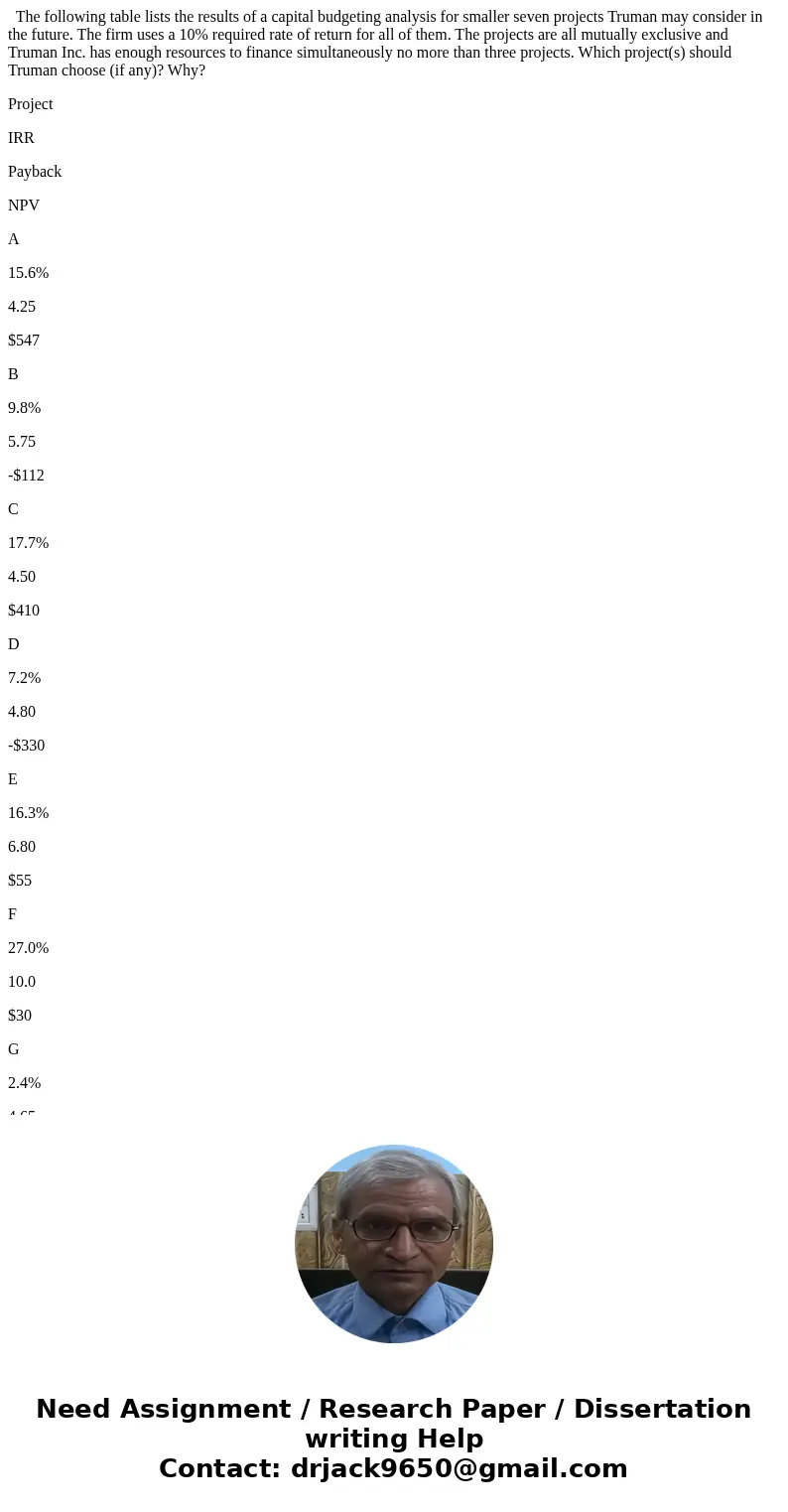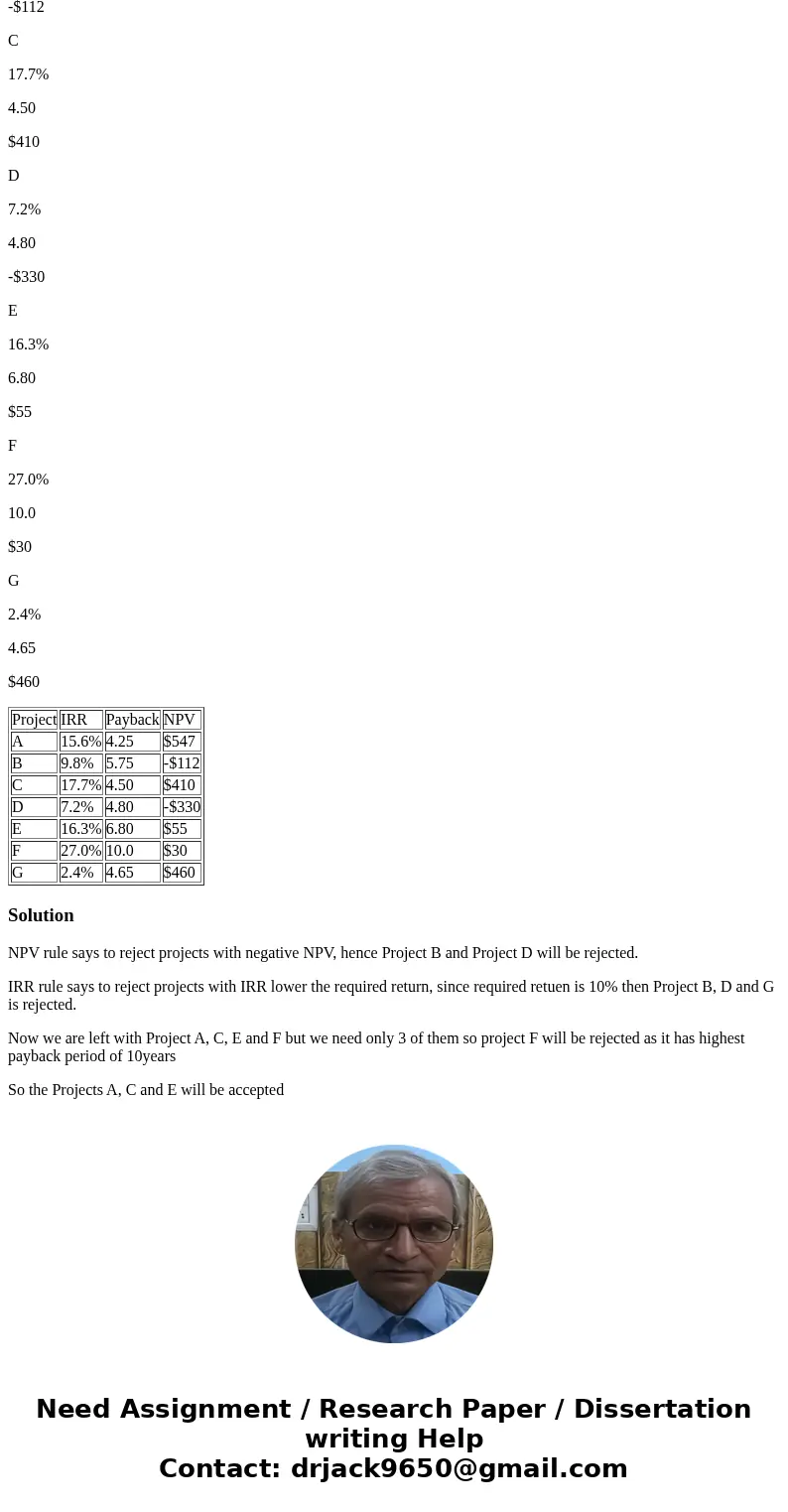The following table lists the results of a capital budgeting
The following table lists the results of a capital budgeting analysis for smaller seven projects Truman may consider in the future. The firm uses a 10% required rate of return for all of them. The projects are all mutually exclusive and Truman Inc. has enough resources to finance simultaneously no more than three projects. Which project(s) should Truman choose (if any)? Why?
Project
IRR
Payback
NPV
A
15.6%
4.25
$547
B
9.8%
5.75
-$112
C
17.7%
4.50
$410
D
7.2%
4.80
-$330
E
16.3%
6.80
$55
F
27.0%
10.0
$30
G
2.4%
4.65
$460
| Project | IRR | Payback | NPV |
| A | 15.6% | 4.25 | $547 |
| B | 9.8% | 5.75 | -$112 |
| C | 17.7% | 4.50 | $410 |
| D | 7.2% | 4.80 | -$330 |
| E | 16.3% | 6.80 | $55 |
| F | 27.0% | 10.0 | $30 |
| G | 2.4% | 4.65 | $460 |
Solution
NPV rule says to reject projects with negative NPV, hence Project B and Project D will be rejected.
IRR rule says to reject projects with IRR lower the required return, since required retuen is 10% then Project B, D and G is rejected.
Now we are left with Project A, C, E and F but we need only 3 of them so project F will be rejected as it has highest payback period of 10years
So the Projects A, C and E will be accepted


 Homework Sourse
Homework Sourse